by David Allen Sibley
Sibley does for trees what he did for birds.
When I started birding, I carried a pencil and small notebook into the field to record sightings and make notes. It was a great way to learn, but a little cumbersome. A few years later, I met a birder who dictated sightings into a cassette-based voice recorder. How cool was that! Well, not the cassette part. So I bought a digital voice recorder with a remote mic. I could keep the device in my pocket, clip the mic to my binocular strap, and be able to record notes without ever lowering my binoculars. Plus, it could record bird sounds in a pinch. I love that thing and never imagined that I could bird without it.
And then comes the iPhone with all its wonderful apps. Smart phones and listing-keeping applications seem to be made for each other. It’s very convenient to keep your list on a device that you always have handy. Although I still use my trusty voice recorder from time to time, I’ve pretty much fully switch over. If you have an iPhone or iPod Touch, I highly recommend using one of these apps. But which one? I’ll briefly describe and compare the iPhone listing apps that I’ve used. (Note, some of these are also available on Android phones, but I haven’t used those versions.)
First, all of these apps will obviously let you record which birds, and how many, you see. They will also email lists, export them in a format acceptable to eBird, and keep a rudimentary life list.
$9.99
Website
Worldwide version ($19.99)
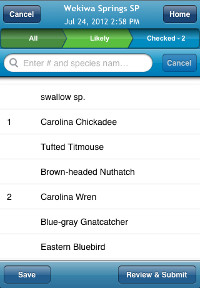
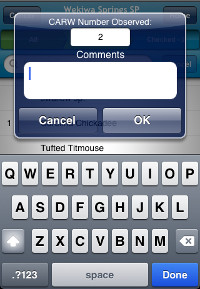
The Good
The Bad
Birdlog is very easy to use (especially after figuring out some shortcuts). I thought the disappointing support for noting details about a sighting would be a deal-breaker for me. But although I hope it will eventually be added, it hasn’t been a very big deal. The speed with which you can enter sightings in the field and the convenience of direct uploads to eBird more than make up for the app’s shortcomings.
Birdlog does not include any life list features within the app. However, once you get your sightings into eBird, you can manage your lists there. This app also does not support any export options other than eBird. But again, you can do that from eBird. This is why I mentioned that Birdlog requires the use of eBird in the Bad list above. As I see it, this isn’t really a knock on Birdlog – the app was designed to be a mobile interface to submit sightings to eBird. So this is more of something to be aware of rather than a flaw in the app.
$12.99
Website
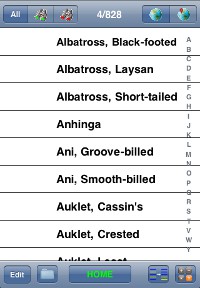
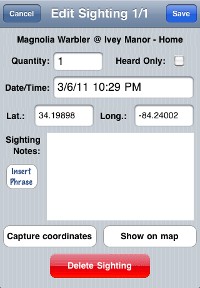
The Good
The Bad
Birdwatcher’s Diary is the most powerful listing app I’ve used. By downloading and installing lists, it can be used anywhere and for just about anything. The filtering capabilities seem especially well-suited to bird surveys and big days. The life list feature has options, unlike most other apps, so you can have it tell you what birds you’ve seen in a given location, time period, etc. You can count different “types” of the same bird individually (male/female, subspecies, etc), but it takes much more effort than in birdcountr.
However, this is not the most intuitive app. I had to actually read the manual to figure out how to use it. But the good news is that the manual is a fairly good and easy-to-follow tutorial that walks you through the myriad features.
$4.99
Website
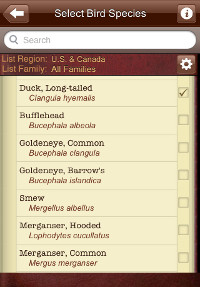
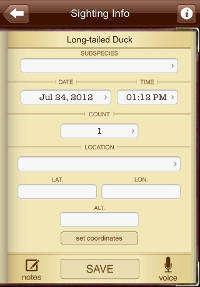
The Good
The Bad
I’ve found Lifebirds Journal to be very easy to use. You can start it up and begin logging sightings immediately without reading any documentation whatsoever (although I’d still recommend going through the help and tutorial available on their website). I like to keep track of “identifiable forms” within species. That is, I keep a separate count for male/female, immature, subspecies, etc. Lifebirds can do that for you.
This app offers a lot of options, but there is a big problem: entering a sighting requires way too much button tapping. To record the most simple sighting – a single bird, without GPS coordinates – requires five taps. And if you’re recording multiple birds, especially of different ages or sex, it can easily require twice as many taps. I find that to be too much time and effort in the field.
$2.99
Website


The Good
The Bad
Of these listing apps, My Bird Observations is the most basic. It will automatically note the start time for each trip, but if you want to record other details (duration, county, etc) you must enter them manually. It does not use GPS. But it is easy, quick, and intuitive to use. The only way to keep track of different types (male/female, etc) is to manually type notes for the species.
First, check out each of these apps’ website. Many of them offer demos and walk-throughs that, while not as good as hands-on experience, will still give you a feel for what the apps are like.
All of these apps will allow you to record the birds you see and create bird lists that can be uploaded to eBird. But ultimately, the one that is right for you depends on your needs. If you need a quick and easy way to count birds, without worrying about recording GPS or various “types”, then My Bird Observations or Lifebirds Journal should work fine. If you think you’ll take advantage of its advanced features, then Birdwatcher’s Diary may be the best choice. And if getting your sightings into eBird is your primary concern, then BirdLog is your app.
Update 8/4/2012: Birdwatcher’s Diary, as of the latest update, can now submit directly to eBird. As soon as I’m able to test it out, I’ll update this page again.
Disclosure: The apps reviewed here were complementary review copies provided by the developers.
In case you haven’t noticed, The Crossley ID Guide: Eastern Birds is getting just a little attention online. But that’s to be expected when you produce something so different and useful. I’ve posted a brief initial review, but there is still much to discuss about this work and many more possible perspectives on it. Here are all the reviews of it that I’m aware of, in roughly the order in which I found them. If I’ve missed one, please let me know in the comments.
February 24, 2011
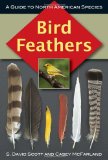
by S. David Scott and Casey McFarland
A useful reference and guide to that which makes a bird a bird – feathers.
I was first introduced to Richard Crossley’s striking photographic bird plates nearly two years ago. A post on 10,000 Birds linked to Crossley’s gallery and asked if this could become North America’s best identification guide. A year later, Princeton University Press announced that they would publish The Crossley ID Guide. The sample plates were unique and utterly amazing. I couldn’t wait to see the book for myself.
In the past month, the buildup to the book’s publication has seen more plates revealed, video interviews with the author, and a few early reviews. I was starting to wonder if it would live up to my lofty expectations. Finally, the day came when I had in my hands The Crossley ID Guide: Eastern Birds.
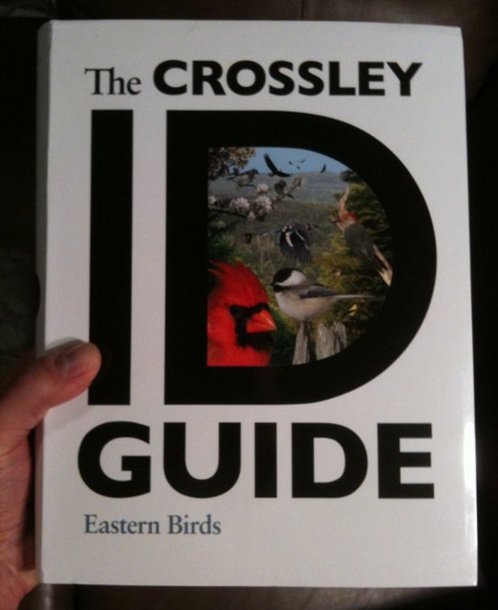
After my initial look-through, I was distinctly…whelmed. I neither loved nor hated it. I still appreciated the reality birding concept that Crossley was going for, where the birds are shown as a part of a lifelike scene in their actual habitat, at various distances, and in all sorts of plumages. But maybe the novelty of the plates was starting to wear off. Some of them also looked “off” somehow, in a manner that I couldn’t quite articulate.
But as I continued through the guide, I started looking at the images more closely. I found myself trying to find all of the birds in each scene, which is not as easy as it sounds. It’s not unusual for songbird plates to have as many as 15 (or more) representatives portrayed. I also started to notice some small details, such as the House Finch that had conjunctivitis. Some images also showed behaviors that aren’t usually mentioned in field guides, much less actually illustrated, like a Rough-legged Hawk perched on a limb that looks much too small to support it, or a Blue-winged Warbler poking its head into a cluster of dead leaves.
I had to further reconsider some initial impressions when I read Crossley’s blog posts explaining some choices concerning color and sharpness in his images. To keep the plates as realistic as possible, many of them are darker and less sharp than photos we’re used to seeing in field guides. I realized that was the main source of my nebulous consternation regarding the images. Once I understood what was being attempted, it bothered me much less. However, there are some images that still seem too dark, like the Bay-breasted Warbler below. The lighting may accurately reflect the conditions in the spruce-bogs where they breed but, call me crazy, I’d like to be able to see at least one of the breeding males well.
The text, overshadowed by the images literally and figuratively, is more extensive than it appears. It covers abundance, behavior, habitat, voice, and identification. It’s very informal, and more than once certain phrases or descriptions reminded me of something Pete Dunne would write (a very big complement coming from me). Don’t skip it. The range maps are pretty standard, though unfortunately they don’t include migratory range.
I should also mention that this thing is huge. You’re not going to want to take this in the field with you. But that’s ok; everything about this book was designed to be studied at home, before you go birding.
I’ve got plenty more to say about it, including additional distinctive features and, sadly, some issues. But that’s going to have to wait for the full review. The more time I spend with The Crossley ID Guide: Eastern Birds, the more I enjoy it and the more I learn from it. This is one book that anyone interested in North American birds needs to see.
Continue on to the full review of the Crossley guide.
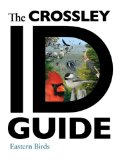
Want a sneek preview of The Crossley ID Guide
? Or maybe the chance to ask the author a question? If so, register today for the Crossley ID Guide webinar.
February 22, 2011, 12 PM-1 PM EST
February 22, 2011, 2 PM – 3 PM EST
You can bet that I’ll be there!
Here are some bird book reviews from January. Shiny.
2011 has the makings of a great year for bird books. It’s just the end of January and there are already several that I’m anxiously awaiting. Here’s a little of what we have to look forward to.

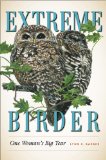
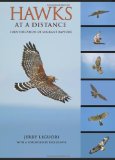

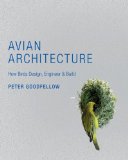
Just today I ran across this title – Binocular Vision: The Politics of Representation in Birdwatching Field Guides
By putting field guides into direct conversation with concerns about species conservation, environmental management, the human alteration of the environment, and the problem of toxic pollution, Binocular Vision is a field guide to field guides that takes a novel perspective on how we think about and interact with the world around us.
January 28, 2011
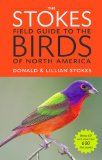
by Donald and Lillian Stokes
An exceptional photographic reference to North American birds.
Here are a few book giveaways that started recently:
Good luck everyone!